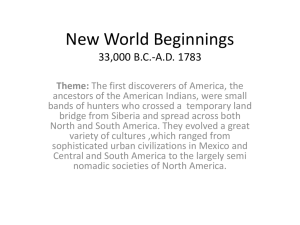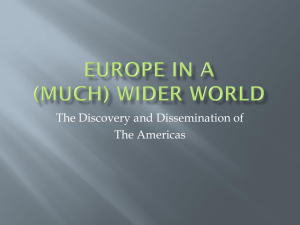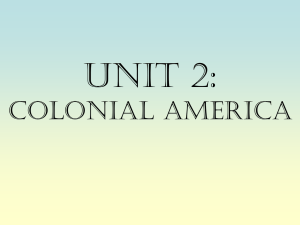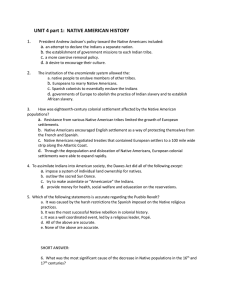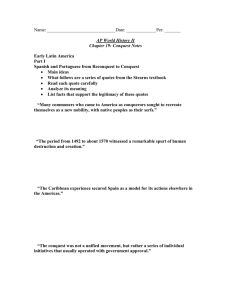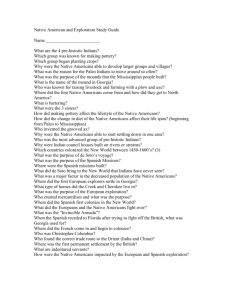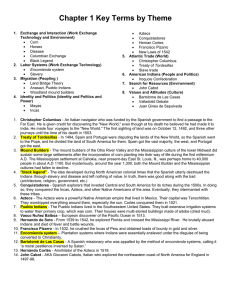Lecture 6, July 16
advertisement
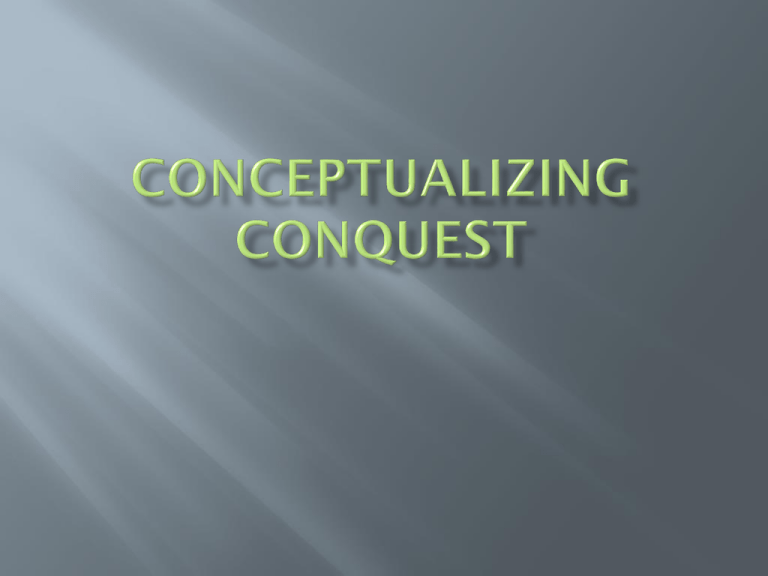
The Role of the Popes Eximiae Devotionis (May, 1493) – Papal sovereignty over the Americas? Dudum Siquidem (Sept., 1493) – The Division of the New World Treaty of Tordesillas (June 1494) – Political settlement of spheres of influence The Role of the Spanish Junta (1504) – Consultation and confirmation Requerimiento (1513) – Legal declaration of Spanish rites read to an unknowing audience 1: The Indians are to be removed from their land and placed into encomiendas 3: The citizen to whom the Indians are given must erect a structure to be used as a church. 4: To make sure the Indians are learning Christianity properly, they shall be tested every two weeks and taught what they do not know by the Encomendero. 14: The Indians must be allowed to perform their sacred dances. 23: Official inspectors must keep records of the activities and also the treatment of the Indians in the encomiendas. 24: The Indians are not to be physically or verbally abused for any reason. 200,000 Spaniards migrated to New World in sixteenth century Depopulation due to epidemic disease created space for migrants Problem: a shortage of women (only 10% of Spanish) led to mixing of Spanish men and native women: the creation of mestizo culture Government: minimal. Only two viceroys for all Spanish possessions in the New World – church was a more effective actor Despite such laws, the lack of central oversight led to the rampant abuse of the encomienda system. The failure of the state to respond to abuse led priests who had served in the New World to voice sharp critiques of practices that had been typical in the Americas. 1537: In Sublimus Dei, Pope Paul III affirms the humanity of Amerindians and condemns their enslavement 1542: The passage of the New Laws and the revolt of the Peruvian encomenderos In wake of revolt, encomenderos’ power became hereditary(!) The division of principle and practice This episode coincided with the composition of Bartolomeo de las Casas’ work: A Short Account of the Destruction of the Indies A devastating critique of Spanish practice An assertion of the natives’ natural innocence The response: Juan de Sepulveda’s Second Democrates An assertion of the natives’ natural subservience The concern for demonic influence on the “savages” Ignorance of higher culture: a nature vs. nurture debate Suitability for conversion: a more innocent nature (Edenic?) vs. the impossibility of virtue The imagery of beasts: the natives as lambs (or monkeys) vs. the Spaniards as lions/wolves (or men) The result: The New Laws upheld by the crown, but no real shift in lived experience of the native Americans The catastrophic exchange of diseases: smallpox and syphilis(?) The remaking of European agriculture The reshaping of the European economy Corn, potatoes and pathological mono-cropping Colonial empires and plantation economics The rise of mercantilism and global piracy Spanish silver: massive inflation and an imbalance of trade The remaking of the American landscape Via animals – pigs, cows, sheep, and horses Via crops – the insatiable demand for sugar cane Via the quest for precious metals
